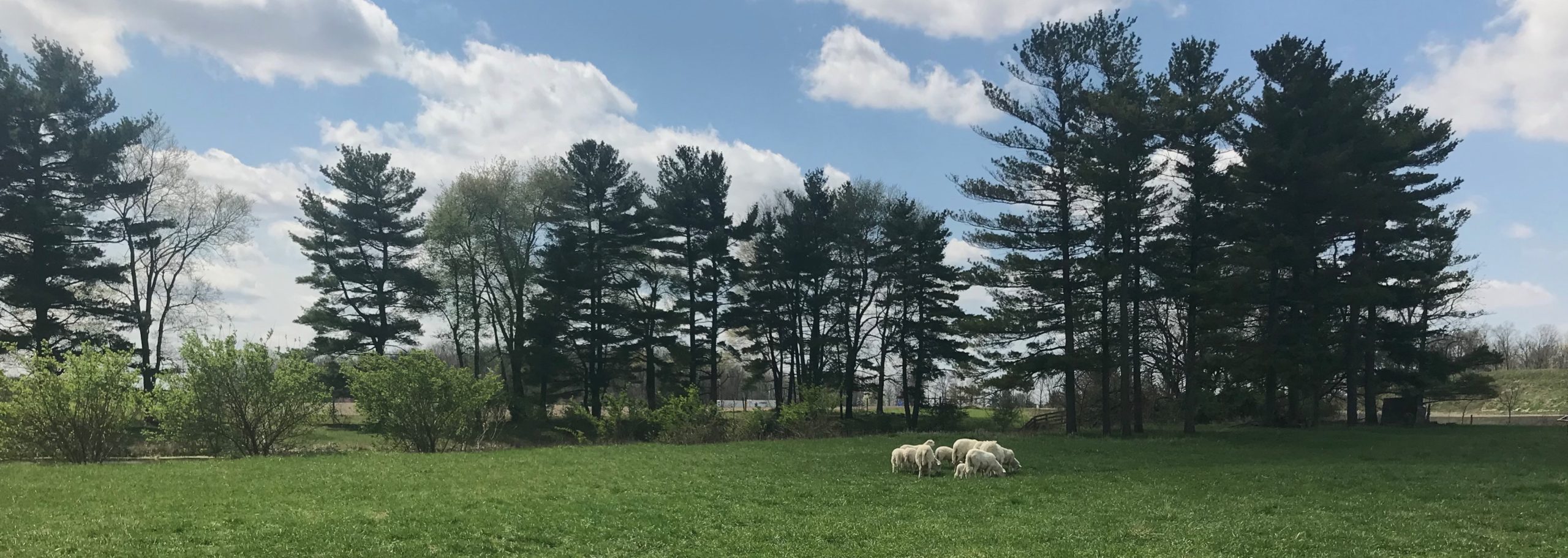
Rural entrepreneur: Wayne County a great place to ‘create your own opportunities’
by Louise Ronald
Seven years ago, Brad Wood was living in a two-bedroom rental near Los Angeles with his wife, baby, dog, and cat. The family needed more room, so they rented a house that happened to have a chicken coop in the backyard. It wasn’t long before they added three chickens to the household.
“Whether you have a local job or work a remote one, Wayne County is a great place to raise your family or learn a new skill.”
Brad Wood, AKA Farmer Brad
Then in the fall of 2014, Wood made a visit to Wayne County, Indiana, to visit his mother and stepfather. He grew up in northeastern Indiana but was unfamiliar with his mother’s new home. What he saw got him thinking.
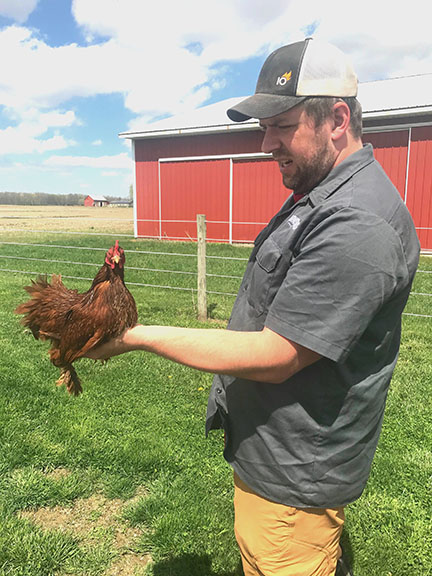
Wood had been working remotely for a Texas company. His wife was a California native, grew up there, and most of her family still lived there. But a move to the Midwest could stretch their income a lot further. A few days after his return to the West coast, Wood got a call from his stepfather. A friend was planning to sell a small farm near Interstate 70 north of Centerville. Was Brad interested?
He was.
After a quick return to Indiana to see the property and negotiate the price, the family – animals and all – was ready for the drive east. By the beginning of December, the Woods had moved into their new home.
“The low cost of living (in Wayne County) will make any big city salary go much farther.”
Farmer Brad
“I felt like this 8-acre homestead would be great for (the baby and) future kids,” he said.
Before the move, the couple was paying over $1,300 a month in rent. Their mortgage payment in Indiana saved them a few hundred dollars a month, and they got “so much more in return.” Wood is enthusiastic about how “the low cost of living will make any big city salary go much farther” in Wayne County, but it didn’t take long for him to get involved in much more than just earning a salary for his remote work. In 2015, he formed Farmer Brad LLC.
“Those three chickens are probably to blame,” Wood joked.
For the cross-country trip, he built a transport box for the chickens. “It was snug enough for them to stay warm,” he said. “I figured it was all right because they were still laying eggs on the way.”
As the family settled in at the farm, Wood found it hard to keep up with chores and began looking for ways to make things easier. “That’s how I developed the automatic chicken water bucket,” he said.
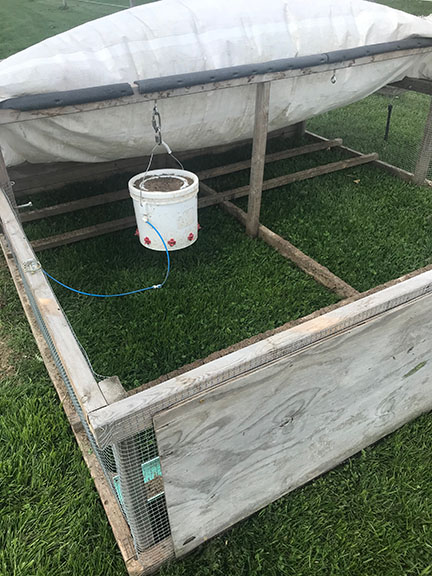
The buckets he found on the market held 5 gallons, but they needed to be refilled manually every other day. He came up with a 2-gallon model hooked up to a water supply and equipped with a float valve not unlike a toilet tank. The bucket would refill when triggered by the valve. The whole unit was designed to be suspended or set on a cinderblock. The chickens peck at “water nipples” on the bottom of the bucket. Each time they peck, a drop of water is dispensed.
Because of its size, the bucket could be shipped in a box 10 by 10 by 10 inches, making it easy and inexpensive to mail. Wood figured out the cost of a unit, made an initial investment, and began manufacturing his invention in his basement, shipping his products all over the country. He set himself up in co-working space at the Center City Development Corporation in Richmond, to work on online sales and continue his remote development job.
A graduate of Taylor University in Upland, Indiana, he majored in computer science and new media systems. He comes from generations of farmers. But first and foremost, he’s a natural born problem solver. Take the example of his Automatic Chicken Waterer. By 2018, Farmer Brad had sold about 350 of the units all over the United States. Wood paid close attention to customer feedback and decided a redesign was in order.
“If you have enough determination and will power, you can create your own opportunities."
Farmer Brad
The first improvement was to supply water to the bucket through ¼-inch tubing – lighter and smaller than the original water hose hook-up. “You don’t have to cut your fence or anything to feed it into your coop,” said Wood. This not only made the waterer easier to install, it also allowed people with multiple groups of chickens to link several buckets together, creating what Wood calls a “watering system.” In 2020, he came out with a version that can be adapted for winter. The bucket has a built-in heating element to keep the water from freezing. (The buckets need to be refilled manually in winter but can be hooked up to the system again in warmer months.)
“I feel like I’m always innovating and creating solutions for backyard chickens,” said Wood. The bits and pieces he uses are off the shelf, he just puts them together with backyard chickens in mind. “It is kind of filling a need that hasn’t been addressed by the big box stores.” That’s the way his mind works. Wood is a natural-born problem solver.
For people who live nearby, Wood offers a chicken coop rental package in two sizes (you can rent both coop and chickens for a summer) “for people who want to see if chickens are a good fit for them.”
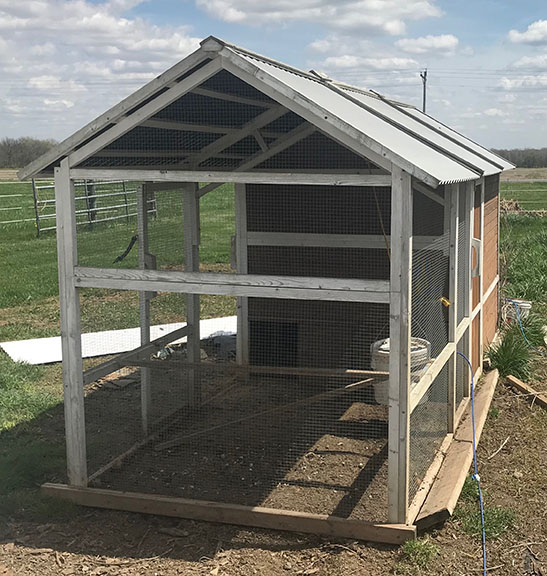
The chicken population on his own farm has grown a great deal. That’s partly because of what Wood calls “chicken math – at first, there are just a few, then you end up having more and more and more” – but it’s also because of decisions he’s made. At the beginning, Farmer Brad sold eggs to nearby neighbors. Much as he enjoyed it, he found that he made very little profit from the eggs, so he shifted to a pasture poultry operation to raise meat chickens.
He set up three “chicken tractors” – lightweight, moveable coops that protect the birds from predators, sun, and wind. It took him about 15 minutes each day to manually pull the tractors a few feet to new territory, spreading the benefits of his chickens’ manure through the pasture and giving the chickens access to fresh grass and a new variety of insects to eat. Each tractor held about 30 chickens, which took about 10 weeks to be ready for processing.
Now he’s on to something new.
Australorp is a docile and hardy breed of chicken developed in Australia. “They’re a good backyard dual-purpose chicken,” said Wood, meaning they can be raised to produce meat or eggs. They also are a good source of income – fertilized Australorp hatching eggs sell for $15 to $20 per dozen. Baby chicks can go for $6 to $15 each. So now a corner of his basement is set up with an incubator that can contain as many as 90 eggs a week, and his pens are segregated to ensure healthy, fully Australorp eggs.
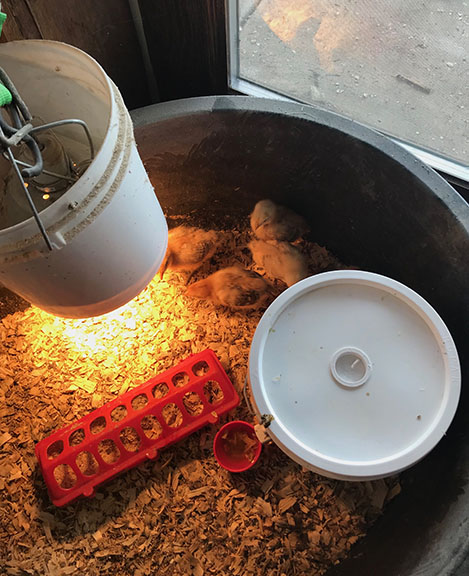
A glance at the operation reveals a lot about Wood’s mind-set. There’s nothing glamorous. The equipment is make-shift but effective. Technology is taken advantage of – a security camera keeps an eye on the chicks. And nothing goes to waste. A smaller incubator he no longer needs can be rented by classrooms or families for their own “hatching experience.”
Similarly, farmers who might want to try pasture poultry can rent one of his unused chicken tractors to try out. If they like it, they can buy plans to build their own from Wood’s website, Farmer Brad.com. The chicken tractor plans (from multiple sources) are an example of Wood’s cooperative agreements with other manufacturers selling to the same market. When an Automatic Chicken Waterer is shipped, the bucket isn’t empty. Wood puts in discount coupons for products from those manufacturers.

Wood’s own farm has expanded beyond chickens. Instead of spending three hours a week mowing land at the back of his property, he invested in a small herd of sheep. He hopes to set up a series of paddocks for rotational grazing, giving the sheep fresh and different varieties of grass. His goal is to sell enough sheep at the end of the growing season to provide winter hay for the rest.
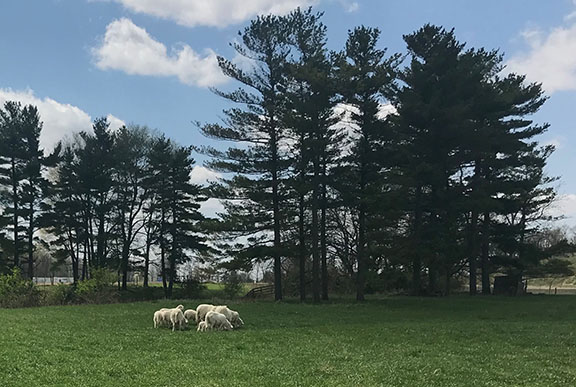
Another new addition is Buttercup, a Jersey heifer. The barn includes an area that could potentially become a milk parlor in the future. Meanwhile, Buttercup has demonstrated the effectiveness of technology. When she got herself entangled in a fence and was pinned to the ground, Wood saw it on a security camera and was able to rescue her from what could have been a fatal situation.
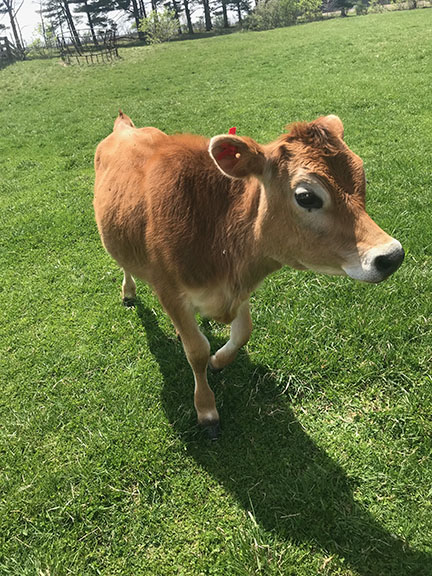
A spring-fed pond on the property is filled with bass. Farmer Brad is doing research on YouTube (where he has his own channel) on using gravity to pump water from the pond to irrigate future crops.
“I’m really into regenerative, sustainable farming,” he said.
An understatement, to say the least. That problem-solving, multi-tasking mind seems to be humming all the time. And all this is addition to his full-time job.

“Whether you have a local job or work a remote one, Wayne County is a great place to raise your family or learn a new skill,” said Wood. He likes the accessibility to surrounding cities (Indianapolis, Dayton, Cincinnati), the multitude of small manufacturers, the schools, colleges, and universities, being able to live on his own land with neighbors nearby, and – most of all – the low cost of living.
Does Wood feel out of the loop? Not at all.
“If you have enough determination and will power, you can create your own opportunities,” he said.